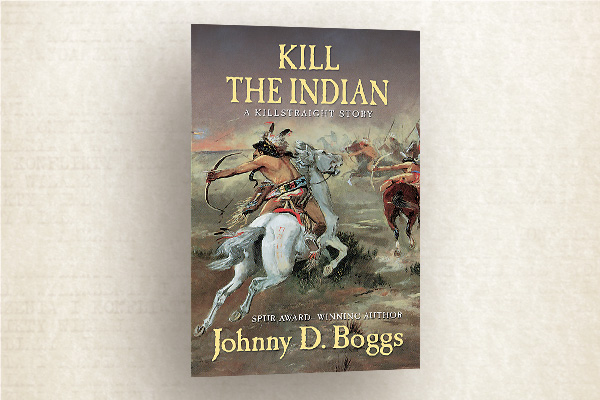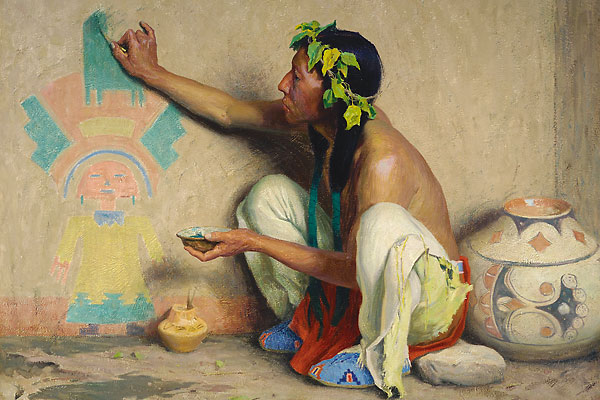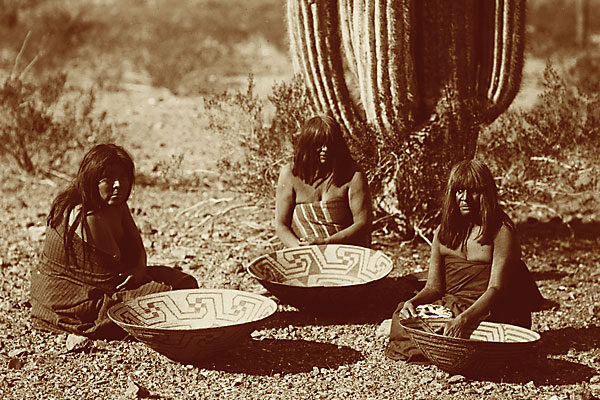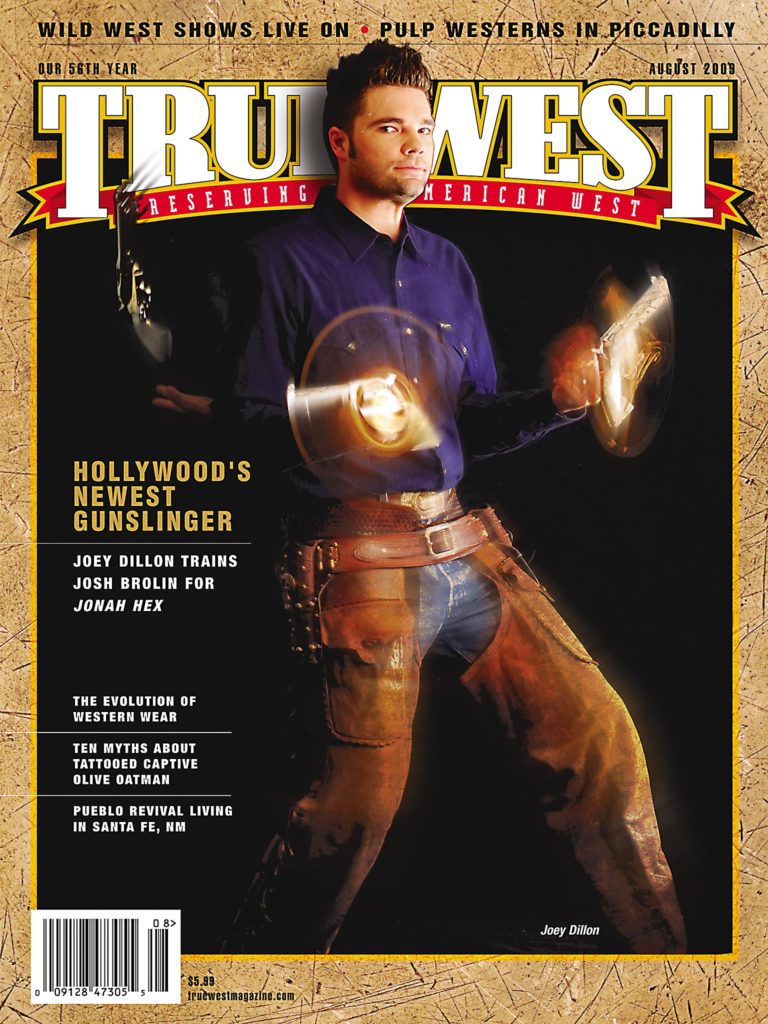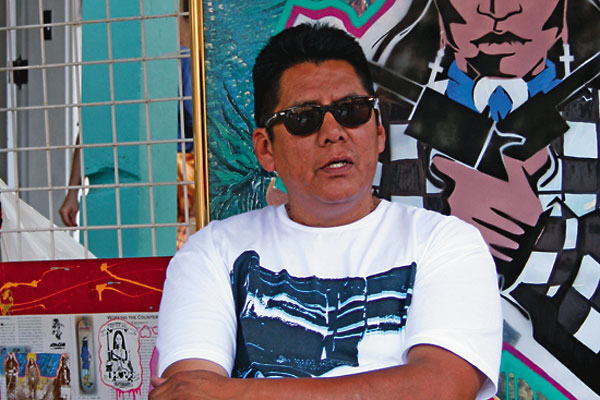
I’m trying to avoid being trampled by a zillion tourists at the Santa Fe Indian Market or buried underneath an avalanche of roasted corn ears, and if I see one more piece of turquoise (no matter how beautiful), I just might scream.
Suddenly, as I pass yet another booth, I’m drawn to the art of San Carlos Apache Douglas Miles.
No … drawn is not the right verb. Doug Miles’s art—“drippy,” “messy,” “chaotic,” “instantaneous”—doesn’t draw you in; it slaps you into reality. It swoops you up and slams you on the pavement. It sends you skating off a vert ramp at 7,135 mph and jump-starts your heart as you plummet back into the here and now. It screams at you that this is Indian art today. This is real. This is contemporary. This is what it takes to survive.
“I didn’t know the community of San Carlos was in my art until I took a step back and looked at how my art looked,” Miles says. “It’s almost like it’s all about survival. The reality, in a lot of reservations, is the majority of Indian people are actually in survival mode, because a lot of reservations are remote. There are very few jobs. There’s a high level of unemployment…. I think that’s where my art comes in. As a matter of fact, I know that’s where it comes in because I’m in survival mode.”
Miles isn’t trying to make political statements. “It becomes almost political by default,” he explains, because “I’m alive, and an Indian, in the West, in Arizona, and Apache.”
He isn’t alone. Indian artists, and Indian markets like Santa Fe, aren’t just re-creating the past in their art. Check out the unique designs of Acoma Pueblo potter Wilfred Garcia Jr. Or the Science Fiction- and pop culture-inspired paintings of Navajo artist Ryan Singer. Or Comanche painter Quanah Burgess’s fantastic blend of acrylics with history. Heck, the poster for this year’s Santa Fe Indian Market (August 22-23) features the contemp-orary vision of Taos jeweler Maria Samora.
Yet Miles is connecting to the younger, urban generation, Indian and non-Indian alike, by painting Indian images on skateboard decks. Apache Skateboards, which started when Miles created a skateboard for his son, have taken off like Mike McGill doing one of his famed 540-degree McTwists.
“I just happened to put Apache culture on a skateboard,” Miles says. “It’s definitely a new way to talk about Apache culture, native culture as a whole, but at the same way it’s not preachy or self-righteous or didactic. That’s never been my thing.”
I have to ask this: “What would you have been doing, as an Apache, 125 years ago?”
“I could have been chasing white people,” Miles says, “fighting them, telling them to stay off Apache land. I’m being kind of sarcastic. Most likely, the same way I sat down and made a skateboard for my son, I would have made him a knife, a quiver. That’s probably what this is about. Indian people have always made things. That’s probably at the heart of it. What I’ve done with Apache Skateboards is about a father making something for his son. Those things continue.
“I don’t believe that art should be a gimmick, but I do believe from the Apache perspective, the story of our people needs to be told…. Life on the Indian reservation is very difficult for a lot of Indian people, even today. If my art tells part of that story, then I’m happy with that.”


